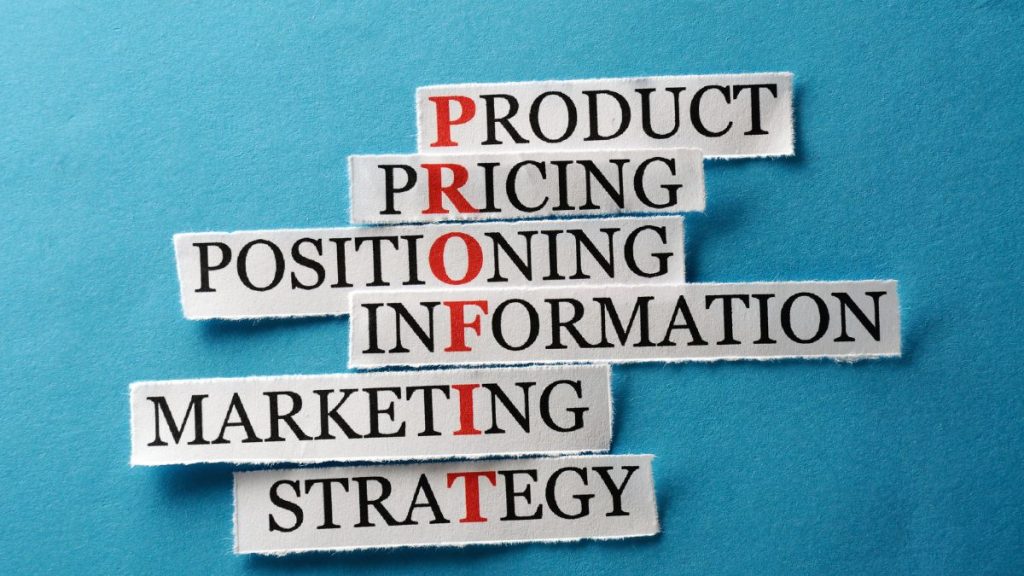In the fast-paced world of digital marketing, businesses are constantly seeking effective ways to reach and engage with their target audience. Among these methods, organic marketing stands out as a powerful strategy that promotes genuine connections with potential customers without relying on paid ads. Unlike traditional advertising, organic marketing focuses on building long-term relationships and creating value that naturally attracts customers. For businesses, this approach can be truly transformative, fostering loyalty, brand recognition, and sustainable growth.
This article explores how organic marketing can reshape your business approach with five key tactics that enhance visibility, engagement, and brand trust. If you’re ready to leverage the power of organic marketing, read on to discover how these strategies can be tailored for success.
1. Understanding Organic Marketing

Organic marketing is the process of driving traffic, building brand awareness, and engaging with customers without the use of paid advertising. Unlike paid campaigns that depend on budgets and stop when funds run out, organic marketing is designed to create a steady flow of engagement by delivering valuable, relatable content. Organic marketing tactics emphasize authenticity, aiming to connect with the audience on a deeper level.
1.1 Organic vs. Paid Marketing
The primary distinction between organic and paid marketing lies in their approach. Paid marketing typically involves paying for ads to get instant visibility. Organic marketing, however, relies on content, engagement, and community-building to create sustained, long-term results. Organic strategies often result in a more loyal customer base, as the focus remains on meeting customer needs rather than making a quick sale.
2. Tactic 1: Building a Strong Brand Identity
A strong brand identity is essential in organic marketing. It’s about creating a recognizable image that resonates with your target audience. Your brand’s visual style, tone of voice, and messaging all contribute to this identity, helping customers relate to your brand on a personal level. A well-defined brand identity encourages people to follow, recommend, and stay loyal.
2.1 Why Consistency Matters
Consistency is crucial when building a brand identity. Maintaining uniform colors, logos, and messaging across platforms ensures that your audience can instantly recognize your brand, whether they see it on social media, your website, or other channels. This cohesion not only enhances brand recall but also builds trust among your audience. Customers are more likely to trust a brand that appears steady and authentic across multiple platforms.
2.2 Connecting with Your Target Audience
To connect effectively with your target audience, it’s vital to understand their needs, preferences, and pain points. Conducting surveys, analyzing data, and listening to feedback are great ways to gain insights. When you know what resonates with your audience, you can tailor your messaging to speak directly to them, making it more likely they’ll connect with your content and take action.
3. Tactic 2: Content Marketing for Organic Growth

Content marketing is the backbone of organic marketing. By providing valuable information, insights, and stories, you create a reason for people to keep coming back to your brand. This type of content encourages interaction, engagement, and shares, boosting organic visibility without the need for paid promotions.
3.1 Blogging for Engagement and SEO
Blogs are a powerful tool for organic growth. Not only do they allow you to share insights and establish authority, but they also improve your search engine rankings. Optimizing blogs with SEO best practices—like using relevant keywords, creating engaging titles, and adding meta descriptions—ensures your content reaches the right audience. Plus, when readers find your blog valuable, they’re likely to share it, further expanding your organic reach.
3.2 Leveraging Video Content
Video content has quickly become one of the most effective ways to engage audiences. Videos are highly shareable, visually appealing, and capable of conveying messages quickly. Platforms like YouTube, TikTok, and Instagram are ideal for sharing informative and entertaining videos that attract organic traffic. To succeed, focus on creating short, impactful videos that address common questions, provide tips, or showcase products in a relatable way.
4. Tactic 3: Leveraging Social Media Platforms
Social media is an indispensable tool in organic marketing. With billions of users on platforms like Facebook, Instagram, and LinkedIn, social media allows you to reach a vast audience organically. However, success on social media requires more than just posting; it involves building relationships, engaging consistently, and delivering content that people find valuable.
4.1 Creating Shareable Social Media Content
To build a strong social media presence, create content that is not only relevant but also shareable. Posts that are relatable, funny, or informative tend to resonate with people and are more likely to be shared. Think of it as sparking a conversation—when people see value in what you post, they want to share it with others. This type of organic engagement can exponentially increase your reach without any paid ads.
4.2 Engaging Directly with Followers
Engagement is at the heart of social media. Responding to comments, answering questions, and even liking or sharing user-generated content shows that your brand values its followers. This type of interaction creates a sense of community, builds loyalty, and makes followers feel appreciated, which translates to a stronger brand presence and increased customer retention.
5. Tactic 4: SEO as the Foundation of Organic Reach
Search engine optimization (SEO) is critical for organic reach. It involves optimizing your content and website so that it ranks higher on search engines like Google. SEO ensures that people who are looking for information, products, or services similar to yours can find you without paid advertising.
5.1 Importance of Keyword Research
Keywords are the backbone of SEO. By conducting keyword research, you can determine what your target audience is searching for and tailor your content accordingly. Tools like Google Keyword Planner or SEMrush can help you identify relevant terms. When your content is optimized with these keywords, it has a higher chance of appearing in search results, drawing more organic traffic to your site.
5.2 On-Page and Off-Page SEO
On-page SEO refers to optimizing elements directly on your website, like titles, meta descriptions, and internal links. Off-page SEO, meanwhile, involves factors outside of your site, like backlinks and social media presence. Both are essential for driving organic growth, as they collectively improve your site’s authority and relevance in search results.
6. Tactic 5: Building Community and Customer Loyalty
Community-building is a key aspect of organic marketing. When customers feel like they are part of a community, they’re more likely to stay loyal to the brand. Strong communities support organic growth through word-of-mouth referrals and positive reviews.
6.1 Creating a Customer Loyalty Program
Loyalty programs can turn customers into brand advocates. By offering perks, rewards, or exclusive content to loyal customers, you make them feel valued, which enhances customer retention and engagement. These programs can also encourage customers to share their positive experiences, further boosting your brand’s organic reach.
6.2 Gathering and Leveraging Customer Feedback
Customer feedback is a valuable tool for refining your organic marketing approach. Listening to your audience’s feedback—through surveys, reviews, or comments—helps you understand what works and what doesn’t. Making adjustments based on this feedback shows customers that you care about their experience, leading to better customer relationships and stronger brand loyalty.
Conclusion
Organic marketing offers a powerful way for businesses to connect with customers, build trust, and grow sustainably. By focusing on genuine engagement and valuable content, businesses can build strong, long-lasting relationships with their audience. The five tactics discussed—building a brand identity, content marketing, leveraging social media, optimizing SEO, and building community—are cornerstones of successful organic marketing. Embracing these strategies not only transforms customer perception but also promotes steady, long-term growth without the constant need for paid ads.
FAQs
- What is organic marketing?
Organic marketing is a strategy focused on attracting customers through non-paid efforts like content, social media, and SEO rather than paid advertisements. - How does organic marketing differ from paid marketing?
Organic marketing builds lasting relationships through valuable content and engagement, while paid marketing relies on ads for immediate visibility. - What is the best content type for organic marketing?
Blogs, videos, and social media posts are highly effective as they provide value and encourage sharing, expanding reach organically. - How long does it take to see results from organic marketing?
Results may take a few months to become noticeable as organic growth depends on audience trust and search engine optimization. - Is SEO necessary for organic marketing success?
Yes, SEO is crucial for visibility in search engines, helping potential customers find your content organically.




